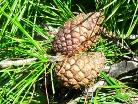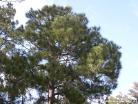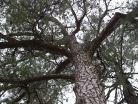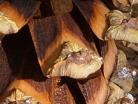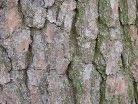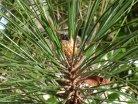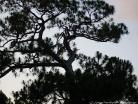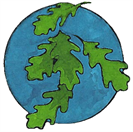
Map courtesy USDA PLANTS Database
State List: CA, ID, MT, NV, OR, WA, WY
Canada: AB, BC
Status: Vulnerable (IUCN)
Visit the Image Gallery for more pictures
Common name: Whitebark Pine, Scrub Pine
Canada: AB, BC
Status: Vulnerable (IUCN)
Visit the Image Gallery for more pictures
Common name: Whitebark Pine, Scrub Pine
Pinus albicaulis is a native conifer found in the western United States and Canada and is the only stone pine native to North America. Extremely long lived and slow growing, Whitebark pine takes 200 years to reach maturity and may live to 500 years. In 20 years, this tree species averages 15 feet tall, eventually growing to 70 feet, usually less, with a trunk diameter of 1 to 2 feet. An alpine tree, whitebark pines can have a shrubby, spreading, multi-stemmed, or Krummholtz form where repeated exposure to high winds give it a twisted and deformed structure. When not wind swept, this Rocky mountain native pine has an open crown with a variable shape depending on site location. The root
Uses
Like all pines, the seeds are edible. The inner bark may be chewed and is rich in vitamins and sugar. Twigs may also be eaten once the bark is peeled and in the spring, male cones may be harvest, boiled or baked and consumed as emergency food. Although stone pines are traditionally the choice trees for harvesting culinary pine nuts, terrain, altitude and slow growth make Whitebark pine less appealing for seed farming. Instead, domestic pine nut production relies on the Pinyon pine. As well as having edibles, pine tree resin is useful in many ways. The resin can be collected by cutting a 'V' shape in the trunk and used, when heated, for waterproofing or mixed with ash and used as a glue. Pine resin is also used in the distillation of turpentine, which has been used in times past in treatments for a variety of ailments. Respiratory complaints like coughing,
White Bark Pine
Pinus albicaulis Engelm.
Pinus albicaulis Engelm.
Click here for print friendly version.
Photo citation: © 1995 Saint Mary's College of California
Sources:
Trees of North America- A guide to field identification-a Golden Field Guide from St. Martin's Press © 2002 By C. Frank Brockman p.24
The Encyclopedia of North American Trees by Sam Benvie. Firefly Books Ltd., 2000 Buffalo, NY © 2000 Sam Benvie p.157
FM- 21-76 US Army Survival Manual- 14th printing. Headquarters, Dept. Of the Army. 1999 Dorset Press, New York. New material ©1991 by Platinum Press, p. C-54
Diseases of Trees and Shrubs, 2nd edition, by Wayne A. Sinclair and Howard H. Lyon, © 2005 Cornell University, Cornell University Press, p. 64, 294
USDA-NRCS. 2011. The PLANTS Database (<http://plants.usda.gov/>, 22 August 2011). National Plant Data Team, Greensboro, NC
27401-4901 USA.
Fryer, Janet L. 2002. Pinus albicaulis. In: Fire Effects Information System, [Online]. U.S. Department of Agriculture, Forest Service,
Rocky Mountain Research Station, Fire Sciences Laboratory (producer). Available: http://www.fs.fed.us/database/feis/ [2011, August 22].
Trees of North America- A guide to field identification-a Golden Field Guide from St. Martin's Press © 2002 By C. Frank Brockman p.24
The Encyclopedia of North American Trees by Sam Benvie. Firefly Books Ltd., 2000 Buffalo, NY © 2000 Sam Benvie p.157
FM- 21-76 US Army Survival Manual- 14th printing. Headquarters, Dept. Of the Army. 1999 Dorset Press, New York. New material ©1991 by Platinum Press, p. C-54
Diseases of Trees and Shrubs, 2nd edition, by Wayne A. Sinclair and Howard H. Lyon, © 2005 Cornell University, Cornell University Press, p. 64, 294
USDA-NRCS. 2011. The PLANTS Database (<http://plants.usda.gov/>, 22 August 2011). National Plant Data Team, Greensboro, NC
27401-4901 USA.
Fryer, Janet L. 2002. Pinus albicaulis. In: Fire Effects Information System, [Online]. U.S. Department of Agriculture, Forest Service,
Rocky Mountain Research Station, Fire Sciences Laboratory (producer). Available: http://www.fs.fed.us/database/feis/ [2011, August 22].

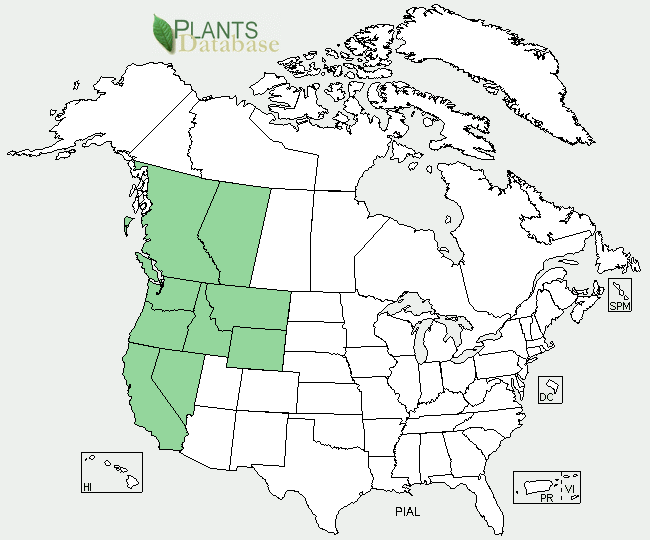
PROTECTED IN NEVADA
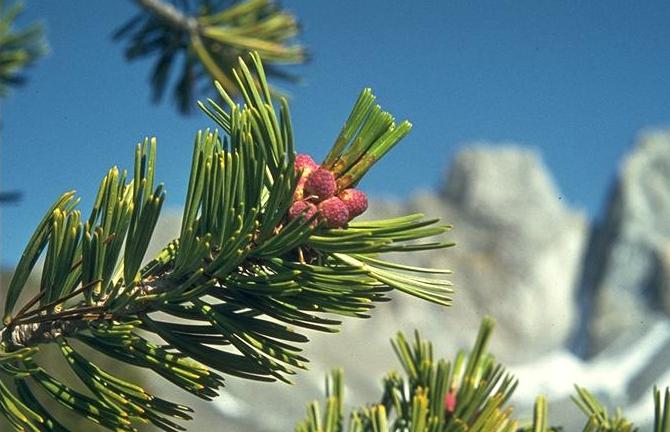


Whitebark Pine, Pinus albicaulis, is the only stone pine native to North America.
The culinary pine nut is usually harvest from stone pines, but domestic pine nuts come from Pinyon Pines.
The culinary pine nut is usually harvest from stone pines, but domestic pine nuts come from Pinyon Pines.
Photo citation: Steve Hurst @ USDA-NRCS PLANTS Database
system is both deep, about 16 inches down, and spreading. This, along with thick but flexible twigs and branches, helps this tree withstand high winds without damage or windthrow. The bark is smooth and silvery when young, becoming reddish brown and furrowed into narrow, irregular, scaly plates when mature. Because of the length of time it takes for a whitebark pine to mature, the bark is often a blend between these 2 stages of development. Needles are short, only 1 to 2.5 inches long, yellowish green, stiff, borne in
bundles of 5, and are tufted at the twig tips. They also persist (meaning stay on the tree) for up to 8 years and have a sweet smell and taste. Whitebark pine cones are 2.5 to 3.25 inches long, ovoid, purplish brown when mature, and spineless. Barely opening to expose large wingless seeds when ripe, the female cones will eventually disintegrate after the seed crop is released.
Habitat
Pinus albicaulis is a mountian pine species and is common between elevations of 5,000 to 10,000 feet. Populations are typically widely distributed rather than in dense stands and although they are adapted to medium and coarse
Habitat
Pinus albicaulis is a mountian pine species and is common between elevations of 5,000 to 10,000 feet. Populations are typically widely distributed rather than in dense stands and although they are adapted to medium and coarse
textured soils, best growth is attained on rocky, moist, well draining sites on ledges, outcroppings and cliffs. Whitebark pine is some
what shade tolerant, cold hardy down to -58°F, requires 90 frost free days and cold stratification for seed germination. It also has higher fire survival rates than other high elevation tree species. Drought tolerant, it can survive on just 18 inches of annual rain but usually receives between 18 and 72 inches. Whitebark pine is an important food source as many small mammals and birds harvest seeds from fallen cones.
Pests and Diseases
Around the turn of the 20th century an asian fungus was accidentally imported along with diseased nursery stock. Cronartium ribicola, commonly known as white blister pine rust, has devestated populations of
Pests and Diseases
Around the turn of the 20th century an asian fungus was accidentally imported along with diseased nursery stock. Cronartium ribicola, commonly known as white blister pine rust, has devestated populations of
this and other 5 needled soft pines throughout the Rocky Mountains. The disease life cycle is 3 to 6 years and the damage is easily seen as the tree tops die and turn brown. Attacking trees of any age, this fungus causes resinous girdling lesions just below the dying foliage. Infection is not always fatal and may end when infected limbs die and fall off. Removing low branches will help keep the trunk from becoming diseased and it is important to remove already diseased areas as soon as they are identified. Thankfully, efforts in the last few decades to screen plant stock for resistance has resulted in an increase in the amount and availability of more resistant trees. Whitebark pine is also prone to snowmold, caused by Neopeckia coulteri and Herpotrichia juniperi, which becomes visible as the snow melts in late spring or early summer. Mainly affecting trees at higher elevations, snowmold creates dark brown mats of dead and decomposing foliage. Whitebark pine is also a host of brown felt blight as well as dwarf mistletoe, a parasitic plant.
bronchitis, common colds, and influenza were eased by steam baths and inhalers. Skin problems, wounds and sores were also treated with poultices and salves. In the late 1800's, it was even used to treat tuberculosis. Because of the difficulty in getting to these trees, they are not commercially important, and while a striking tree in nature, commercial landscaping use is limited as well. In addition, this native pine is protected in Nevada and has been listed as vulnerable/decreasing by the IUCN, International Union for Conservation of Nature.




™
- Trees
- A-Z scientific
- A-Z by Common Name
- Families
- Aceraceae Maple Family
- Anacardiaceae Sumac Family
- Annonaceae Custard Apple Family
- Aquifoliaceae Holly Family
- Arecaceae, Palm Family
- Betulaceae Birch family
- Bignoniaceae Trumpet Creeper Family
- Burseraceae Frankincense Family
- Caprifoliaceae Honeysuckle Family
- Chrysobalanaceae Coco-plum Family
- Cornaceae Dogwood Family
- Cupressaceae Cypress Family
- Cyrillaceae Cyrilla Family
- Ebenaceae Ebony Family
- Ericaceae Heath Family
- Fabaceae Pea Family
- Fagaceae Beech Family
- Hamamelidaceae Witch Hazel Ffamily
- Hippocastanaceae Horse Chestnut Family
- Juglandaceae Walnut Family
- Lauraceae Laurel Family
- Leitneriaceae Corkwood Family
- Magnoliaceae Magnolia Family
- Meliaceae Mahogany Family
- Moraceae Mulberry Family
- Myricaceae Bayberry Family
- Myrsinaceae Myrsine Family
- Myrtaceae Myrtle Family
- Nyctaginaceae Four Oclock Family
- Olacaceae Olax Family
- Oleaceae Olive Family
- Pinaceae Pine Family
- Platanaceae Plane Tree Family
- Polygonaceae Buckwheat Family
- Rhamnaceae Buckthorn Family
- Rosaceae Rose Family
- Rubiaceae Madder Family
- Rutaceae Rue Family
- Salicaceae Willow Family
- Sapindaceae Soapberry Family
- Sapotaceae Sapodilla Family
- Simaroubaceae Quassia Family
- Styracaceae Storax Family
- Symplocaceae Sweetleaf Family
- Theaceae Tea Family
- Tiliaceae Lindon Family
- Ulmaceae Elm Family
- Taxaceae Yew Family
- Yucca Family
- Browse by State
- Rare or Endangered Species
- Trees_with_Special_Uses
- Tallest and Biggest
- Noxious Weeds
- Causes
- About Us
- Our Stores

Want to add your tree to our picture gallery? Click here for details!
Tree lists:
•A-Z by scientific
name
•A-Z by common
name
•By Family
For state A-Z list click state name below.
•A-Z by scientific
name
•A-Z by common
name
•By Family
For state A-Z list click state name below.

-Color denotes a tree that is rare or endangered

Custom Search
